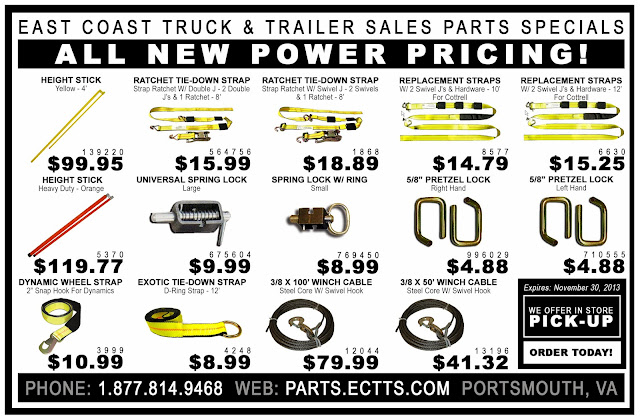Simple Steps To Keep Your Truck Tires From Eating Your Profits Alive
We know tires are expensive. We also know most drivers mean to keep up with their tire maintenance programs, but driving often gets in the way. Until you drop a tread, or pick-up a bolt, it's easy to forget about your tires. Problem is, tires are very unforgiving, and will eat up your profits any chance they get. Don't let them. Here's how.
Any tire showing damage is trying to tell you something. You might need an alignment if you see certain patterns, so knowing which tire patterns to look for helps you identify the problem. Tire sites usually have a chart on types of damage to expect with each problem.
Keep tires of the same diameter together (New with new. Used with used). If not, you end up with one tire skipping and scraping the road because it isn't the same size. Premature wear isn't pretty.
Know when to replace/retread your tires. Minimum legal depth is 4/32" on the steer and 2/32" on others. Tires wear at approximately 1/32" per 13-14,000 miles. Measure your treads now, and mark their expected replacement dates based on your average mileage. Problem solved.
Always install new tires - not retreads, on your steering axles. Better safe than sorry when it comes to steering gear.
Make sure your inflation is correct for your load.Underinflated tires, especially under load, will chew tires quickly.
Adjust pressures for cold climates you are driving in. If you're coming from a warmer area, when you hit cold weather areas the air in your tires contracts, and suddenly you're running underinflated. Check your pressures.
Damaged, improperly balanced wheels will damage tires.Look over all of your wheels for signs of damage - every trip.
Keep radials with radials, and bias ply with bias ply. Don't mix them, or you will see a shorter tire life.
Tires do have a maintenance schedule. Whether you're a single O/O, or have a fleet of trucks, have a plan for replacement and/or repair with an escrow fund and based on mileage and you'll keep those tires from eating your profits alive.
.png)


